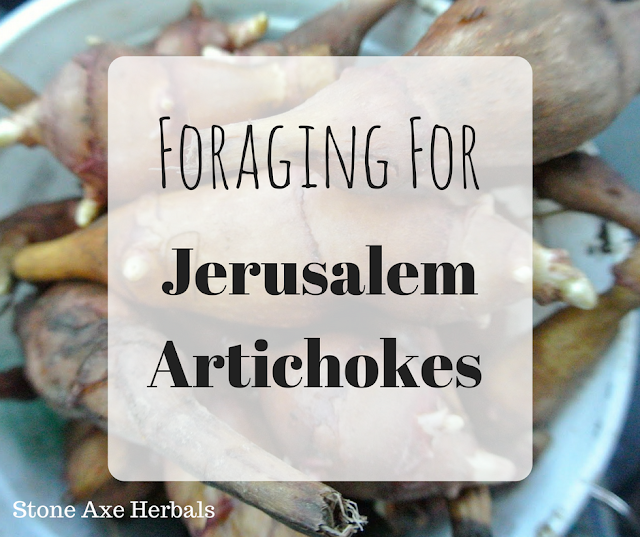Foraging For Jerusalem Artichokes
This is a great time of the year to go out and harvest them. They begin to sprout in April and grow tall throughout the summer. The tubers do not grow to full maturity until October or later. This is an extremely useful plant as you can harvest a relatively large amount of food in a short period of time during any season. Jerusalem artichoke is also one of the only perennial vegetables that grow this far north, so they are a great addition to any permaculture garden. Be careful where you plant them, though, because they spread like wildfire and you will never, ever kill them. They grow well in poor, moist, but well-drained soil. To plant, simply bury some of the tubers in the ground like potatoes. You can dig them up every year but they will always grow back because you can never get every tuber. Also, you may damage some while harvesting, throw these back and let them grow for next year.
Although they are wonderful garden plants, you can also find them growing wild in many places. Not only do the tubers spread on their own, but many that were planted by Native Americans are still there. Also, because each plant is a clone (they rarely grow from seed), the entire stand will probably be just one individual. You can measure how large they are and determine how long them have been growing approximately because they grow just a few inches a year on their own. This patch that I was harvesting from was over 400 years old!
To harvest, very gently dig up a small portion with a shovel and then feel around in the dirt with your hands for the tubers. They can grow two feet deep and two feet out from the plant, so keep looking if you don't find them at first!
Wash any you are going to use immediately gently so as not to damage the delicate skin. Once harvested, store them in soil in a cool place (less than 40 degrees Fahrenheit, if possible). You can wash them as needed. The best way is just to leave them in the ground and dig them as needed. This can be hard in the winter, though.
Jerusalem artichokes are starchy like potatoes, but also nutty and crunchy like a chestnut or radish. They can be eaten raw or cooked like a potato and are great both ways. Jerusalem artichokes don't get as soft as potatoes do though, so don't be surprised when they are still a little crunchy after cooking. I will warn you, though, that they contain a large amount of inulin, a polysaccharide that makes certain people pretty gassy. It is fine for most, but it is best to try just a little bit the first time you eat it.
They are great raw on sandwiches or salads. My favorite way to eat them, though, is to fry them in deer fat, lard, or butter with some chopped apple. You can even add sunflower seeds or dried fruit for a nutritious tradition treat. They are also good as hashbrowns. You can peel them before cooking but I don't find it to be necessary.
Disclaimer: This blog is just my own opinion, nothing more. While I try my hardest, everything may not be completely accurate or complete. Sorry, I'm only human, so do not hold me accountable for anything you do to harm yourself or the world around you. I do make money from this blog (seriously not very much at all guys). If you click on any of the links in my blog I may make money from it. I'm not sponsored by any of these people I just honestly love these products and want to give you the resources to find them. I am not a medical practitioner; consult a health professional before using any herbal remedies. I am not claiming to diagnose, treat, prevent, or cure any ailment.








